According to IBIS World, dog walking services in the U.S. are a 1 billion dollar a year industry. Between 2017 and 2022, the U.S. dog walking industry saw an annual growth of 1.8%.
Some of this growth may be accounted for by increased pet ownership during the coronavirus pandemic. In 2019, U.S. citizens purchased or adopted 23 million new pets. Of these new furry companions, 90% were dogs.
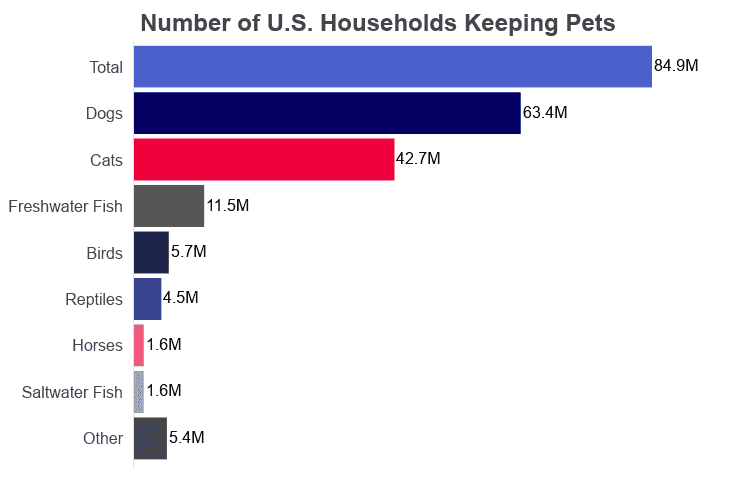
Many dog walking services double as a dog sitting business. Pet care businesses have a projected CAGR of 11.52% from now to 2030. All in all, it’s not a bad time to get started in the pet industry.
Let’s take a closer look at how to start a dog walking business. Here, we’ll sort through everything from market research and branding to sourcing equipment and engaging with customers.
1. Conduct Dog Walking Market Research
Understanding your market and target customer is the first step to developing a successful dog walking brand. As you gather information for your business, think about:
- Gaps you can fill in the industry
- Dog owner demographics in your area
- Popular pet services offered in your community
- Recommended daily walking time per breed
- The current rate for dog walking
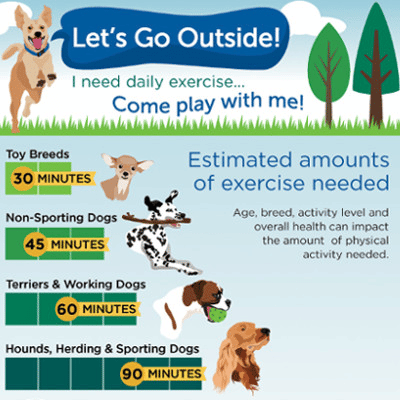
There are two types of market research, primary and secondary.
Primary market research includes first-person experiences like speaking to local pet owners and visiting other businesses to check out the competition.
Secondary market research is finding details already available from someone elses primary research. Examples of secondary research include online reviews, business reports, and government statistics.
Choosing the Right Services for Your walking Business
Dog walking might be the main service in your business model, but it can’t hurt to branch out. Some other services to consider adding to your business are:
- Pet sitting
- Pet transportation
- Dog training
- New puppy and parent classes (learning to walk a pet)
See what competitors are offering, read online studies, and chat with local pet owners to find out which services will be profitable.
2. Analyze the Competition
To be number one in your industry, you need to know what your competition is bringing to the table. As a dog walker, your competition is local.

Some of the ways to check out your local dog walker competition are:
- Visit dog walker business websites
- Read online reviews for local pet walkers
- Poll local pet owners on their favorite local pet services
- Check out competitors social media
Many dog walking companies include a variety of additional pet services. As you check out the competition, it might be worth deciding if some of these add-on services are right for your brand as well.
Some of the leaders in the dog walking industry include:
Fetch! Pet Care
Fetch! Offers dog walking, pet sitting, pet taxi services, overnight care, and pet medical administration. To start a franchise, the overall investment is roughly $74,967 to $80,667.
Out-U-Go!
Out-U-Go operates in Illinois, Colorado, and Wisconsin. They offer dog walking and pet sitting services.
Wag!
Wag provides dog walking in all 50 states, across more than 5,300 cities. Services include Walking, pet sitting, pet boarding, and dog training.
3. Understand the Costs of Starting Your Own Dog Walking Business
There are initial and ongoing business expenses associated with starting a dog walking business. From marketing research to paying your accountant, there are many fees to consider. As you create your business plan, think about the following costs.
What Does It Cost to Start Your Own Dog walking Business?
Starting a dog walking company is cheaper than many other small business startups. There are no office spaces or retail locations to lease, and overhead is quite low. Some of the business expenses you’ll encounter as you get goin include:
- Legal fees (including registering and licensing your company)
- Branding and marketing costs
- Point of sale (POS) system
- Dog walking business insurance
- Website domain and design
- Treats
- Equipment (leashes, treat dispenser, water bowls, etc.)
- Employee wages
Costs for a new dog walking business are between $74,967 and $80,667 for a franchise, and under $10,000 for a personal business startup. This franchise price is based on a business model with other services, such as pet sitting, pet taxis, and dog walking.
A franchise is more expensive than a personal startup because you pay for an established brand, location, client base, and marketing tools.
Business Equipment/Materials
A dog walking business doesn’t need much in the way of large equipment. There are some materials you’ll need to keep your doggy friends fed, watered, and walking.
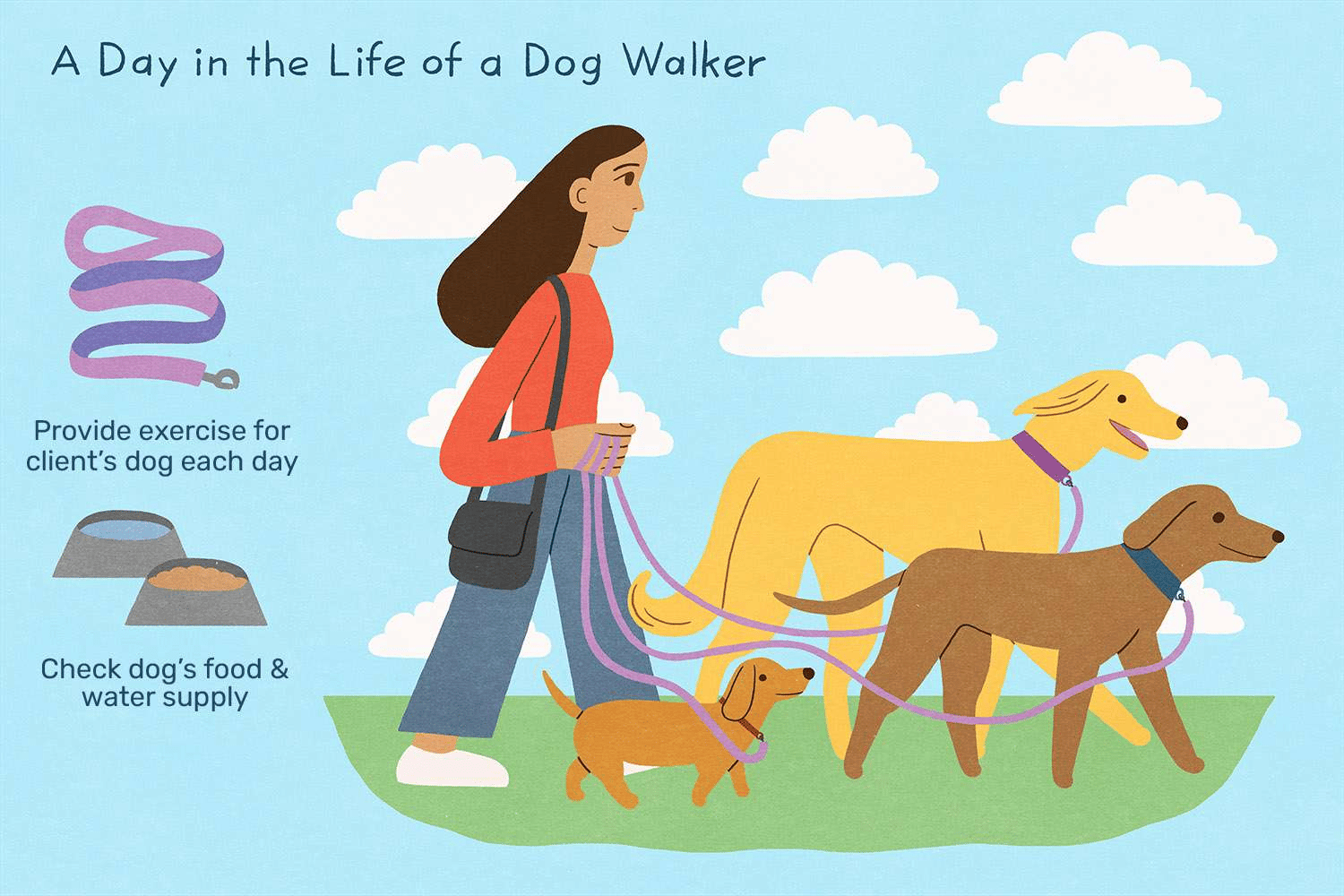
Some dog walking supplies you might need are:
- Branded Leashes:Most dogs come with their own collars and leashes. You can brand your own to use during walks. They run about $1.30 per unit at Everything Branded.
- Portable Water Bowls: Your furry clients might need a drink or snack on the go. Portable food and water bowls from Everything Branded run $1.51 per unit.
- Doggy Treats: You can buy dog treats in bulk shipments of 15 lbs for $80 to $100 from Chewy.
- Treat Pouch: A treat pouch keeps dog treats easily accessible while your hands are full of leashes. Some dog walkers choose to carry a fanny pack instead. These run anywhere from $5 to $25. Check Dogline Wholesale for bulk orders.
- Waste Bags: Somebody’s got to do the dirty work when dog walking, and it’s you. Waste bags let you clean up quickly on the go when a pet makes a mess. Dog waste bags are sold in bulk for about $42 for 2200 bags from Downtown Pet Supply.
You can also find these products at local pet stores, Walmart, and even dollar stores.
Business Formation
Forming a business means registering your business with the Small Business Administration. It costs roughly $300 to $800 to get your name registered and apply for necessary permits and licenses.
Dog Walking Business Insurance
Business insurance is important for businesses of all shapes and sizes. It protects you and your employees against financial hardship caused by damage to people or property by your business. General liability insurance is the most common insurance product for dog walking businesses.
Utilities
A dog walking business take places outside. The only utilities you need to worry about are the ones for your office space and business phone line.
If you rent an office in the city, you can expect to pay about $2.90 per square foot for electricity. One average an American home owner pays about $45.44 a month for running water. These costs may fluctuate based on your office/home size.
What Are the Ongoing Costs of a Dog walking Business?
There are ongoing costs to keep your business running after initials startup fees are paid. These are the things you need/pay for regularly, such as:
- Dog treats
- Business cards
- Insurance
- Staff training and wages
- Point of sale (POS) fees
- Banking fees
Any products you sell, such as dog snow booties, or branded leashes and collars, are also ongoing costs.
4. Form a Legal Business Entity
To make your dog walking business legal in the United States, you must form a legal business entity. There are four main types to choose from:

Limited Liability Corporation (LLC)
An LLC is a business entity designed to protect you from business liabilities. If a dog you’re walking bites somebody, your personal assets are kept separate during any impending lawsuit. Similarly, if your business goes under, your private finances aren’t considered for repayment for business loans.
Sole Proprietorship
A sole proprietorship is a business entity for a single business owner. It can also be used in the case of a married couple with joint ownership over a business. Sole proprietorship keeps all the decision making power in your court.
The only problem with sole proprietorship is, unlike an LLC, it doesn’t separate personal and professional assets.
Partnership
Partnership entities are a good fit for families going into business together. It links all business owners together with joint control over the company. The downside is that, like a sole proprietorship, a partnership leaves all personal assets vulnerable.
If your dog walking business files for bankruptcy, lenders could come looking for your personal savings.
Corporation
A corporation style business entity is highly advanced. This entity is for large businesses, and therefore more costly than an LLC or sole proprietorship. It’s also complicated to apply for, with plenty of paperwork to file before you can begin serving customers.
This isn’t a great choice for small dog walking businesses.
5. Register Your Business for Taxes
To legally operate in the U.S. your dog walking business needs an Employee ID Number (EIN). You apply for an EIN, or federal tax ID, through the U.S. Small Business Administration.
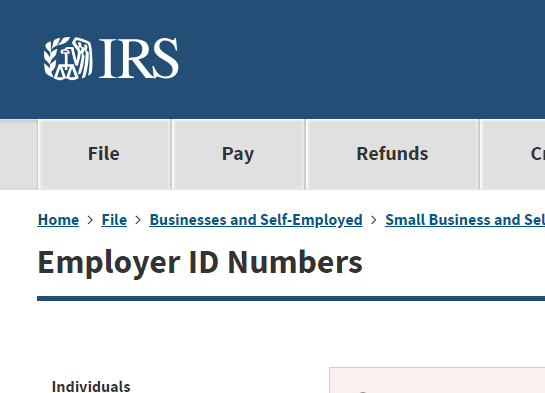
A dog walking business requires an EIN to:
- Pay employees
- File annual business taxes
- Open a business bank or credit card account
- Change payment options for non-resident employees
The U.S. government sets taxes by individual state. Check yours to make sure you’re meeting state regulations for your pricing model.
6. Setup Accounting for Success
The financial side of a dog walking business gets complicated. There are so many clients and furry friends to account for. From marketing expenditures to client invoicing, accounting keeps a handle on your finances. Here are some options for small business accounting.
Accounting Software
Accounting software like QuickBooks provides tools and training for small businesses to manage money. You can perform many of the tasks a bookkeeper or accountant would perform without the extra cost.
QuickBooks organizes invoices, automates spending reports, and offers several packages for individual budgets and needs.
Find an Accountant
An business accountant is pricey at somewhere between $150 and $400 an hour. Small business owners may choose to avoid these fees by relying on accounting software or a bookkeeper.
At tax season, a CPA is the best person to organize and file your business taxes. They dot all the i’s cross all the t’s, and ensure every legal aspect of the filing process is met.
Get a Business Bank Account
A business bank account is one of the things the IRS recommends in their Small Business Tax Workshop. Both for legal and organizational purposes, a business bank account is useful for a dog walking business. Keep income and payments separate from personal spending, and avoid speculation of improper financial management.
Apply for a Business Credit Card
Business credit cards keep finances separate between personal and professional purchases. This makes taxes and record keeping easier. Business accounts also come with benefits, like:
- Low or 0% APR for a set amount of time
- Rewards (cash back or travel miles)
- Custom spending controls
Business credit can impact personal credit scores, so monitor your spending and repayments.
7. Obtain Business Licenses and Permits
Federal business licenses are obtained through the U.S. Small Business Administration. For dog walking, there are no federal agencies involved. This means you likely only need state licenses to operate.
Check the Find Local Assistance tool through the SBA by entering your city and zip code. It will help you locate any state licenses you need as a dog walker.
There’s no official certification for dog trainers. However, if you want to stand out you can apply to the Certification Council of Professional Dog Trainers. The CCPDT exam has a pre-requisite of 300 walking hours (in the past 3 years), a recommendation from a veterinarian, and signed documents provided by CCPDT.
8. Get Business Insurance
Every U.S. business should have business insurance. The best product for a dog walking business is general liability insurance. You’ll pay somewhere between $300 to $1,500 a year depending on your plan and add-ons. This gives you $1 million in coverage.
General liability insurance protects against damages to people or property caused by your services or products. If someone trips over one of your dog’s leashes, for example, your insurance pays for medical and legal fees.
9. Create an Office Space
Dog walkers spend their workday outside with furry friends. This means no office or retail space to perform obligatory administrative tasks.
From invoicing clients to paying employees, you need a spot to get your paper work done. Here are some office space options for dog walking business owners.
Home Office
A home office is likely the best option for a dog walker. Without any store space or pet care facility to use, a home office minimizes the need for a leased space. The IRS also allows for tax deductions up to $1,500 a year for home offices.

You can deduct things like:
- Utilities
- Mortgage payments
- Travel expenses
- Internet and phone
Choose between individual deductions or $5 per square foot of home office space.
CoWorking Office
Coworking office spaces are one of the greatest business inventions of our time. They offer a space within your budget to work outside of the home. The space is shared with other local workers, like a vacation timeshare for business.
We recommend WeWork to find coworking office space. They offer flexible short-term plans with customizable office settings. Choose from private, semi-private, and shared spaces in your city.
Commercial Building Office
A large commercial office space is likely too large and pricey for a local dog walker. There’s administrative tasks to perform, but not a whole lot of space needed otherwise. Commercial offices charge by square foot. You could pay somewhere around $24 per square foot for an office.
10. Source Your Equipment
There’s not a lot of big equipment required as a dog walker. This is one of the major benefits of the dog walking business model. Sourcing equipment is as easy as walking into any local pet store. For treats and food, you can buy in bulk from suppliers like Chewy.
Here are some options for sourcing dog walking supplies.
Buy New
New equipment is beneficial in the pet industry, especially for walking dogs. Dogs prefer using leads and toys with their own scent on them. Buying new products keeps strange scents off the equipment you need to successfully walk your furry clients.
Try Petco or Wilderdog to get the equipment you need.
Buy Used
For dog walkers, there’s not a great need to buy used (aside perhaps from a commercial vehicle). As most pets come with their own collars and leashes, you’re better off getting any professional walking tools new.
If there are things you want to look for used, check out Facebook Marketplace or Craigslist for local listings.
11. Establish Your Brand
What makes your dog walking business unique? Your brand is your reputation. It helps define you in the mind of clients and competitors. There are many ways to build your brand, including creating a digital presence. Here are some ways to get started.

Get a Business Phone Number
A business phone keeps personal and professional calls separate. This makes it easier to remember client phone numbers, and for clients to remember yours. A business phone line is also one of the things you can get a tax break on at the end of the year.
Not sure where to go for your business line? Google Voice is one option, offering new business lines for $10 a month. You can also go with age old phone giants like AT&T or T-Mobile.
Create a Logo & Brand Assets
Your logo makes you memorable. It’s a big part of your physical brand, and helps clients distinguish you online and in person. Your logo can be used on a variety of merchandise and marketing tools, including:
- Staff uniforms
- Commercial vehicles
- Products for sale (leashes, collars, or even doggy treat bags)
- Business cards
- Signage
We recommend Looka to get started with your logo and brand design. Looka is a simple-to-use AI tool which takes your personal preferences and creates a logo for you. You choose several styles of dog walking business images, colors, and fonts until the perfect logo appears.
Create Business Cards and Signage
Business cards and signs tell customers where you are and how to reach you. Signs are especially important if you’re at a local market or job fair, looking for new clients. It helps you stand out from competitors in your area.
Business cards are the original “social media share”. They can be passed to friends and colleagues, left on local business counters, and even photographed and shared online.
Vistaprint is a good place to start your business card design. The site works a lot like Looka, providing options based on your personal preferences for font and color. You can even use your new Looka logo on your Vistaprint cards.
Purchase a Domain Name
Your own domain name gives your brand a sense of authority. Choose a name that includes your business title, or clearly demonstrates what your business does. This is a chance to market yourself in a way. It will be one of the points of contact on your business card, so it’s important to stand out.
Namecheap.com is one place to look for affordable business domain. Their .com domains start at $5.98 a year.
Build a Website
Building a website is a big step toward online brand recognition. As a business working outside an official store front or office space, it’s important to have a “home base” where clients can reach you. Your website is like your digital retail space.
Some things to include in your website for best outcome include:
- Dog walking schedule openings
- Services
- Products (if any)
- How to get in touch (contact information)
- Online scheduling tool
- Easy navigation
- Mobile friendly viewing
You can make your own website design through platforms like Wix. If you’re not web savvy, look for a freelancer from a website like Fiverr.
12. Join Associations and Groups
Talking to other business owners in your industry can be a big help. From learning about the best new dog treats to getting walking tips for finicky pups.
The International Association of Canine Professionals connects all types of dog business owners. This is a great jumping off point. You can also get connected in the following ways:
Local Associations
Joining a local dog walking association can be a big support as you start your business. Check with local vets and dog daycares to learn about associations in your area.
Local Meetups
There are always plenty of local events for pet industry leaders. From groomers and doggy daycares to dog trainers and dog walkers. You can also use online tools like Meetup to find upcoming events.
Meetup helps small business owners connect with others in their industries. This is a neat tool because you can join existing groups, or start your own. Search by industry, state, and city to find groups and events in your area.
Facebook Groups
Facebook is a useful resource for networking with other dog walking business owners. Social media provides a casual and low-pressure way to ask questions and get advice as you start your business.
Check out these dog walking business Facebook groups:
You might find more Facebook groups to join from new connections in these groups. Keep an open mind as you look for your own network of dog walkers.
13. Focus on Marketing
Dog walking business owners don’t have store fronts or corporate offices for dog owners to find them. You rely heavily on marketing to get your brand out in the community.
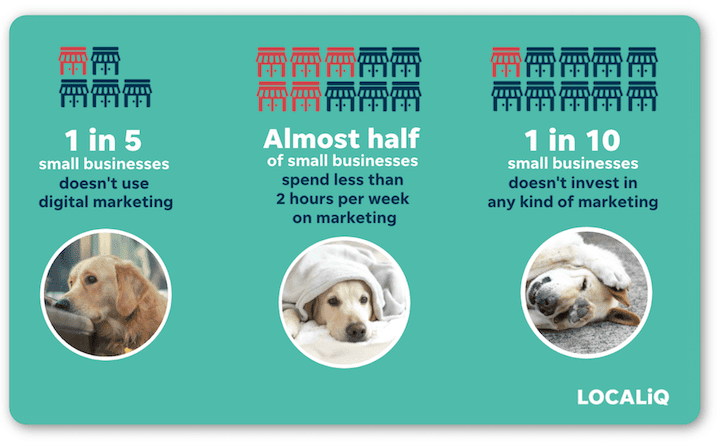
Spread the word about your services in the following ways.
Ask Friends, Family, and Coworkers
It’s easy to overlook our friends and family members as untapped marketing resources. This is word-of-mouth marketing at its finest. Some ways to get your loved ones involved include:
- Walk their pets and ask for honest reviews
- Have them hand out flyers and business cards at work
- Invite them to share your social media pages and posts
Build a portfolio with reviews, photos, and videos of friend and family pets. These early initiatives will pay off by showing local dog owners what you’re all about.
Digital Marketing Ideas
Your digital footprint plays a big role in the success of your dog walking business. You may be walking on the streets in your local town, but many customers will look to connect online. Some ways to market yourself on the internet include:
- Create a business Instagram with photos of your furry clients
- Blog about the challenges and triumphs of life as a dog walker
- Target dog owners with Facebook ads
- Email coupons and exclusive offers for new customers
Don’t forget to engage with customers as they share, like, and comment online. Engagement humanizes your brand. This is important as you start a dog walking brand.
Traditional Marketing Ideas
Traditional marketing encompasses print ads in a variety of mediums. From bus ads to business flyers, these tools are valuable assets for small business owners.
Some traditional marketing solutions for dog walkers include:
- Sample packs of treats stapled to a business card
- Mailers with listed dog walking services and prices
- Local billboards
- Doggy meet and greet at the local community center
- Newspaper ads
These are all wonderful ways to catch the attention of local dog owners. Best of all, there’s no risk of these marketing efforts being accidentally deleted.
14. Focus on the Customer
Customers are the key to a successful dog walking business. As a field-based business, you rely on customers to spread the word about your services. Focusing on dog owner needs, and the canines you serve improves brand loyalty and word-of-mouth marketing.
Some ways to give back to your customer include:
- Exclusive offers (Example: free walk Friday)
- Loyalty rewards
- Referral programs
- Dog socializing events
- Private and group walk service options
- Specialty walk services for injured or elderly pets ( For example, stroller or wagon rides)
- Products for pet comfort (For example, dog booties and sweaters in cold months)
Sometimes it’s the little things that go a long way with customers. Use social media polls and chat with current customers to find out which offers and services they’re most excited to see.
We hope this guide has been useful as you start a dog walking business. Have a paw-some time with your new business endeavor!
